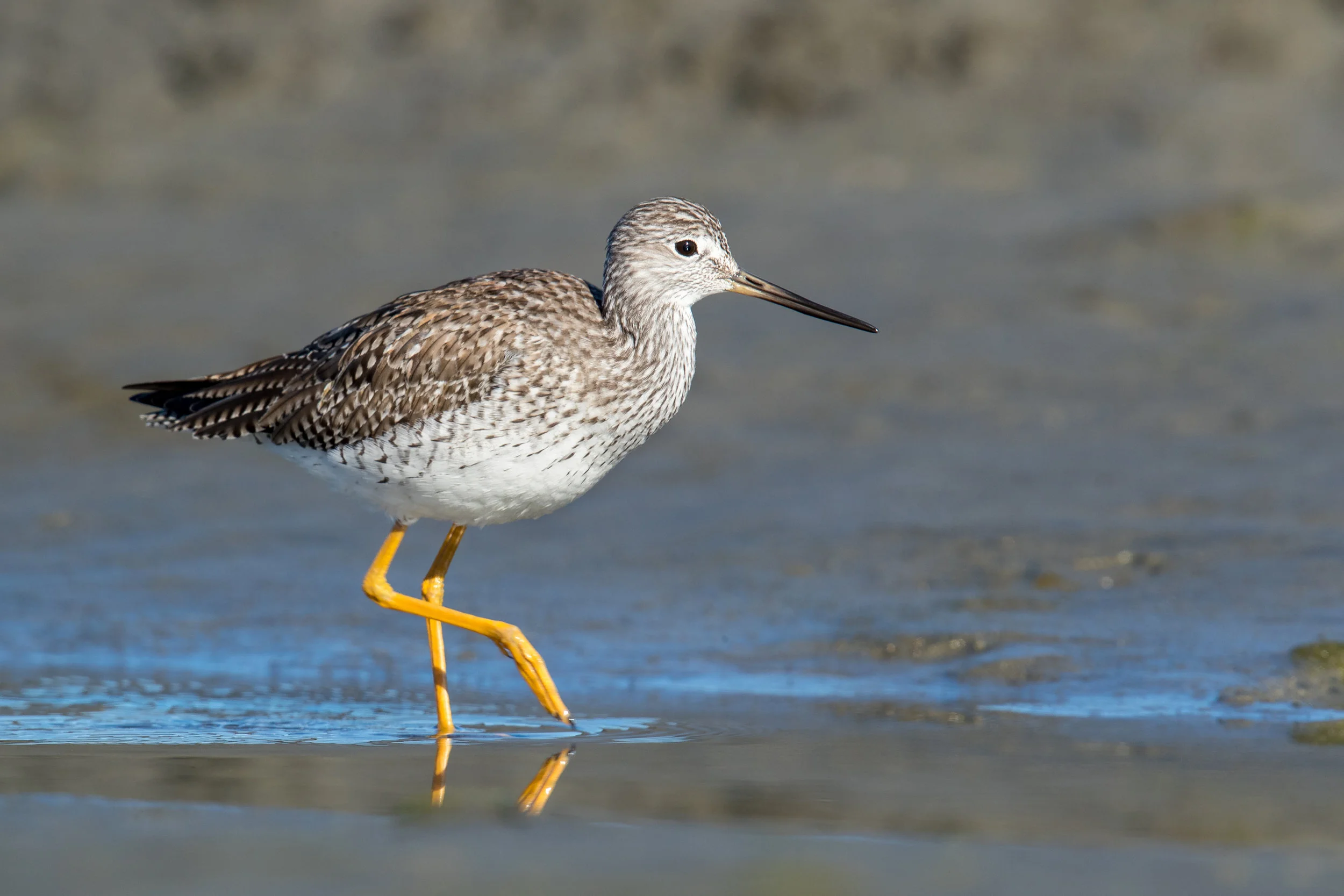One of the most common pelagic birds of the North Pacific Ocean the Fork-tailed Storm Petrel is seldom seen from shore. It spends eight months of the year at sea.
Ring-necked Pheasant
Rufous Hummingbird
Great Blue Heron
Ring-necked Duck
American Tree Sparrow
Greater/Lesser Yellowlegs
Marbled Murrelet
The Marbled Murrelet (MAMU) is 9.5-10" long. The genus name Brachyramphus (brach-ih-RAM-fus) is from the Greek brachys meaning short, and nymphos, or beak for very short bill. The species name marmoratus (mar-more-AY-tus) is Latin for marbled and refers to mottled or irregular spots and streaks of summer plumage.
Green Heron
Belted Kingfisher
Canyon Wren
Nashville Warbler
Lincoln's Sparrow
Baird's Sandpiper
Baird’s Sandpiper is not seen very often in Washington and because of this it poses an identification challenge for many birders. However, its slightly larger size when compared to other peeps; its lack of red or rufous coloration; and its penchant for foraging higher on beaches and in drier areas, all help to separate this peep from the others.
Pigeon Guillemot
The Pigeon Guillemot (PIGU) is a member of the auk family and is about 13-1/2” long. It is generally found close to rocky shores along the Pacific Coast from Alaska to California. The genus name Cepphus is from the Greek kepphus meaning sea bird; the species name columba is from the Latin for dove or pigeon.






















